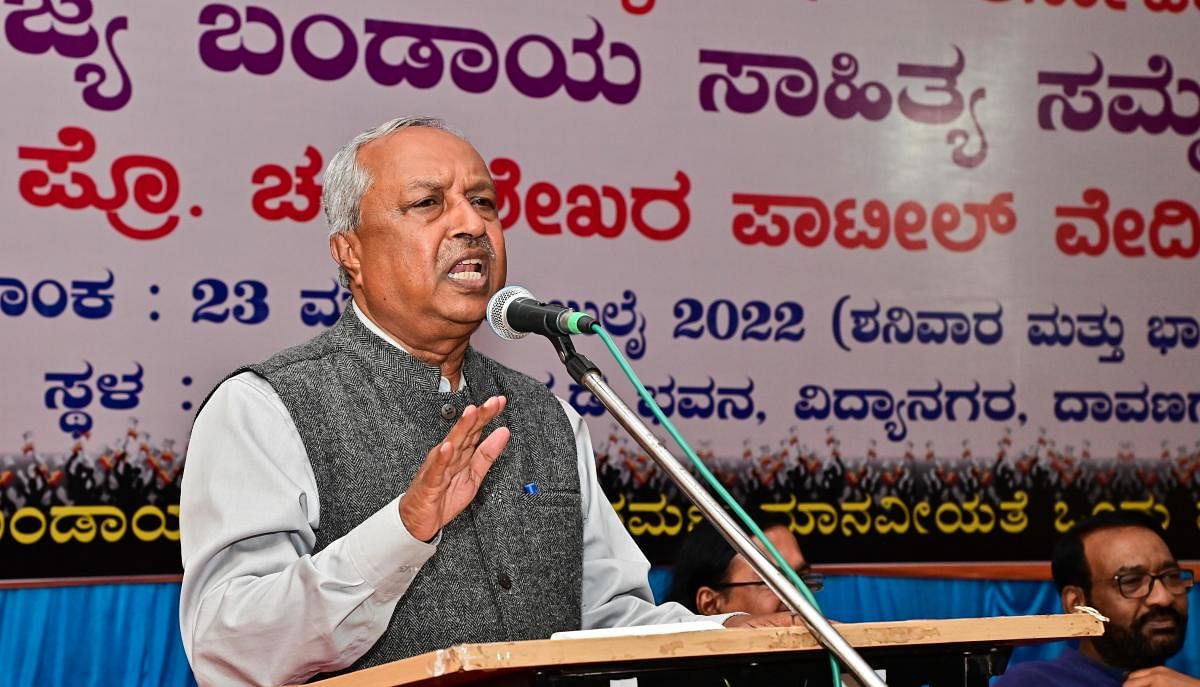The mighty pens of the rebel poets


Long-surviving literary movements witness ebbs and flows in intensity with the passage of time. The ability to revive and reinvent itself to be more contemporary determines the sustenance of a literary movement.
One such example, the Bandaya Literary Movement (BLM), remains a milestone in the Kannada cultural space. Over five decades old, the progressive and rebellious literary movement has used prose and poetry to challenge social and economic injustices.
The first impetus to ‘organise’ came in the two-day Bandaya Sahitya Sammelana held in Bengaluru on March 10 and 11, 1979. This impetus subsequently shaped the movement further.
The Dalit movement had already taken a definite shape in the state and also guided BLM. The Dalit Sangarsha Samiti was already in existence before the first Bandaya Sahitya Sammelana was held. The theatre collective, ‘Samudaya’, was also proactive in this regard. Dalit, Bandaya and Samudaya forces grew, supplementing each other and ushering social and political consciousness in the cultural milieu.
India had just emerged from the experience of the Emergency imposed by former Prime Minister Indira Gandhi. The then Karnataka minister B Basavalingappa had said that Kannada literature was ‘busa’ (cattle fodder). His comment had led to social conflicts. Basavalingappa’s criticism was directed at contemporary Kannada literature, which represented only upper castes and lacked representation of lower sections.
Kannada literature was at a crossroads, and there was turmoil. A question loomed large: was there enough impetus for a new literary movement? Should social sensibilities of contemporary issues not find a place in literary expressions?
In response to these looming questions, I wrote the article `Ittichina Sanna Kathe: Hosa Ashaya’ (Recent Short Story: New Concern). It was carried by ‘Akshara Sanchike’ edited by G N Ranganath Rao in November 1975. The article highlighted fresh content in a few contemporary Kannada short stories that were critical for the launch of a new movement.
In the 1975 article, I had written, “It is good to see the arrival of new writers with social consciousness in the short story genre. This marks a major turn, but such writers of all literary genres need to organise themselves for creative activities for the birth of a movement.”
Before my article, renowned writer, K P Poornachandra Tejaswi’s preface titled ‘Hosa Digantada Kadege’ to his collection of short stories ‘Abachurina Post Officeu’ (1973) had stressed the need for fresh discovery.
Social faultlines
The Kannada literary space was hungry to represent various social faultlines and this was the reason why a literary movement was born. These faultlines could have otherwise birthed a social movement. Thus, inspired by multiple forces in a ripe milieu, the BLM took shape.
The Navya movement, which was a turn towards modernism that several Kannada writers took after a period of literary renaissance, was individual-centric. The Bandaya Literary Movement in contrast was society-centric.
The movement advocated equality, progressive socio-political consciousness and did not subscribe to any political party. The activists retained their various schools of thought even as there was unity to strengthen the movement.
It provided an outlet not only for those subscribing to Gandhism, Lohiaism, Marxism and Ambedkarism but also for those not subscribing to any of these ideologies. The movement soon became a union of social and cultural forces and a unique experiment in the country.
The literary movement also raised a few questions. Writers strongly advocated their social responsibility. This was opposed on the grounds that the approach affected creative liberty. The opponents maintained that a writer should be committed only to life.
Well, where does one live this life? Isn’t it in society, among people? Aren’t writers too people? Aren’t they living in society? Therefore, instead of individual sensualism, literature should be socially responsible. Writers should be accountable to people to strengthen the bond between social life and literature. As Georgi Plekhanov points out, social responsibility doesn’t lie outside creative freedom.
A shift in ideology
The movement prompted the shift of social, cultural, literary and other refined spaces, from an individual-centric ideology to a society-centric ideology. The bond between individual consciousness and mass consciousness deepened. The Bandaya movement steered even the analysis of literature from new standpoints and bases, beyond readymade critical models.
These ideological standpoints also inculcated a sense of confidence among budding writers. It was a platform for socially diverse beings to express themselves. They finally had found an outlet for their outbursts. When the movement first took birth, writing in itself was a rebellion for many social communities.
A sense of superiority and arrogance in the Kannada literary space would have dented the confidence of many, terminating their writing careers. It is now a historic fact that the Dalit and Bandaya movements rescued talented writers from ‘merit infanticide’. BLM is not a path of violence, but a path of change.
The argument that tradition and progressiveness should grow to complement each other gained momentum. The BLM rightfully embraced progressive ideas from all thought processes that preceded the Kannada literary and cultural movements.
It respected all such processes but managed to construct a new ideology for contemporary times. This impacted even writers who were not part of the progressive movement. Most writers rejected the caste system, practice of untouchability and inequality. The Bandaya Literary Movement was an inspiration for this transition.
Negativity marks contemporary society. Concepts of nation, religion and culture are wrongly defined to divide society, disrupting harmony. Several instances of violence, in language and actions, are coming to the fore. The current atmosphere in the country makes it certain that there is a dire need for the concepts of equality, tolerance and humanity. Equality and affection should remain the core of diverse India. The Bandaya movement is several steps forward in this regard.
Over 40 BLM meetings have been conducted in four years in Bengaluru, Tumakuru, Chitradurga, Belagavi and Ballari. The wheel of ideological dynamism will continue to spin.
(Translated from Kannada by Jagadish Angadi)